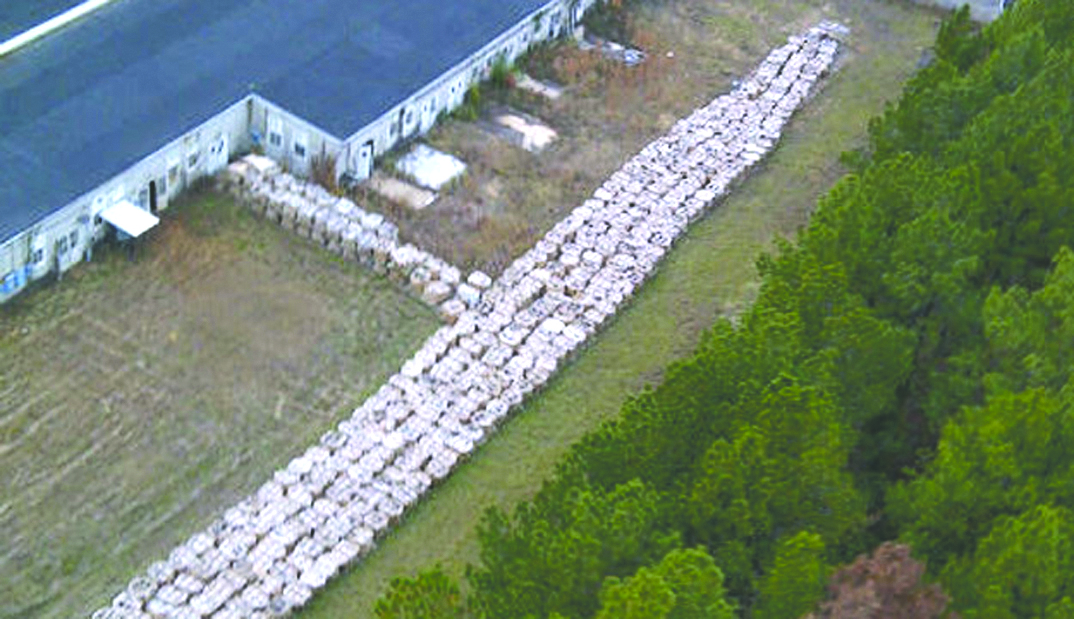Stacey Tinsley
Bossier Press-Tribune
Congressman Mike Johnson (LA-04) says 90 days after a controlled burn of illegally stored explosives was completed, part of Camp Minden is no longer an active superfund site.
“It’s no longer a superfund site. They cleared it 90 days after the control burn. After the last of the explosives was completed. So that is why it was not on the active list for the EPA,” Johnson said.
“The contamination was in those little bunkers. They determined it never seeped in the groundwater. It was a surface explosive issue and not something that got into the soil. That’s why they cleared it after the burn. It wasn’t a risk anymore,” he added.
Johnson continued to explain that every five years water samples are taken to check for contamination.
“Water samples are taken every five years to make sure everything is safe. There are no new contaminants,” said Johnson.
A uniquely-designed burn chamber was constructed on site at Camp Minden with the sole purpose of destroying more than 15 million pounds of M6 artillery propellant that were illegally stored by now-bankrupt Explo Systems, Inc. The munitions stockpile was discovered in October 2012 following an explosion.
The burn was completed in mid 2017, however part of Camp Minden is still a Superfund site, according to the EPA. The Louisiana Army Ammunition Plant, now known as Camp Minden, began in the early 1940s during World War II to produce munitions for the military..
“There was a lot of contamination left on the property and so it became a superfund site in about 1989,” Carl Edlund, director of the Superfund Program for the Environmental Protection Agency told the Webster Parish Police Jury in 2017.
“There were a number of cleanup projects that were done on site initially. They had a facility that was manufacturing TNT-related products, and they had a pink water lagoon. The sludge left in that lagoon was picked up and incinerated. At that location, and about three or four other locations, some of these contaminants seeped into the shallow groundwater.”
Shallow groundwater is roughly 300 feet deep underground, but the contaminants, about 30 feet deep, did not make it deep enough to contaminate the drinking water, he said.
Because it was not feasible to extract it, he said they chose a remedy called natural attenuation, a remediation, under favorable conditions, that acts without human intervention to reduce contamination in soil and groundwater.
“That’s been going on for about 15 years, and about every two years, we come out and do sampling,” he said.
According to a report from the Associated Press, the Trump administration completed the fewest cleanups of toxic Superfund sites last year than any administration since the program’s first years in the 1980s, figures released by the Environmental Protection Agency indicated last week.
The federal government wrapped up cleanups at six Superfund sites around the country in the 2019 budget year, the fewest since three in 1986, EPA online records showed.
President Donald Trump campaigned on pledges to cut environmental protections he saw as unfriendly to business. In office, Trump has presided over rollbacks and proposed rollbacks of a series of protections for air, water, wildlife and other environmental and public health concerns, as well as sharp declines in many categories of enforcement against polluters.
The EPA posted the 2019 figures on its website earlier this month. The tally also shows one cleanup completed so far this budget year.
But Trump’s budget proposal for next year calls for slashing money for the Superfund program by $113 million. As in previous years, the White House asked Congress to cut the EPA budget by more than 20%.
Congress largely has ignored Trump’s calls for EPA cuts, keeping the agency’s money roughly stable.

